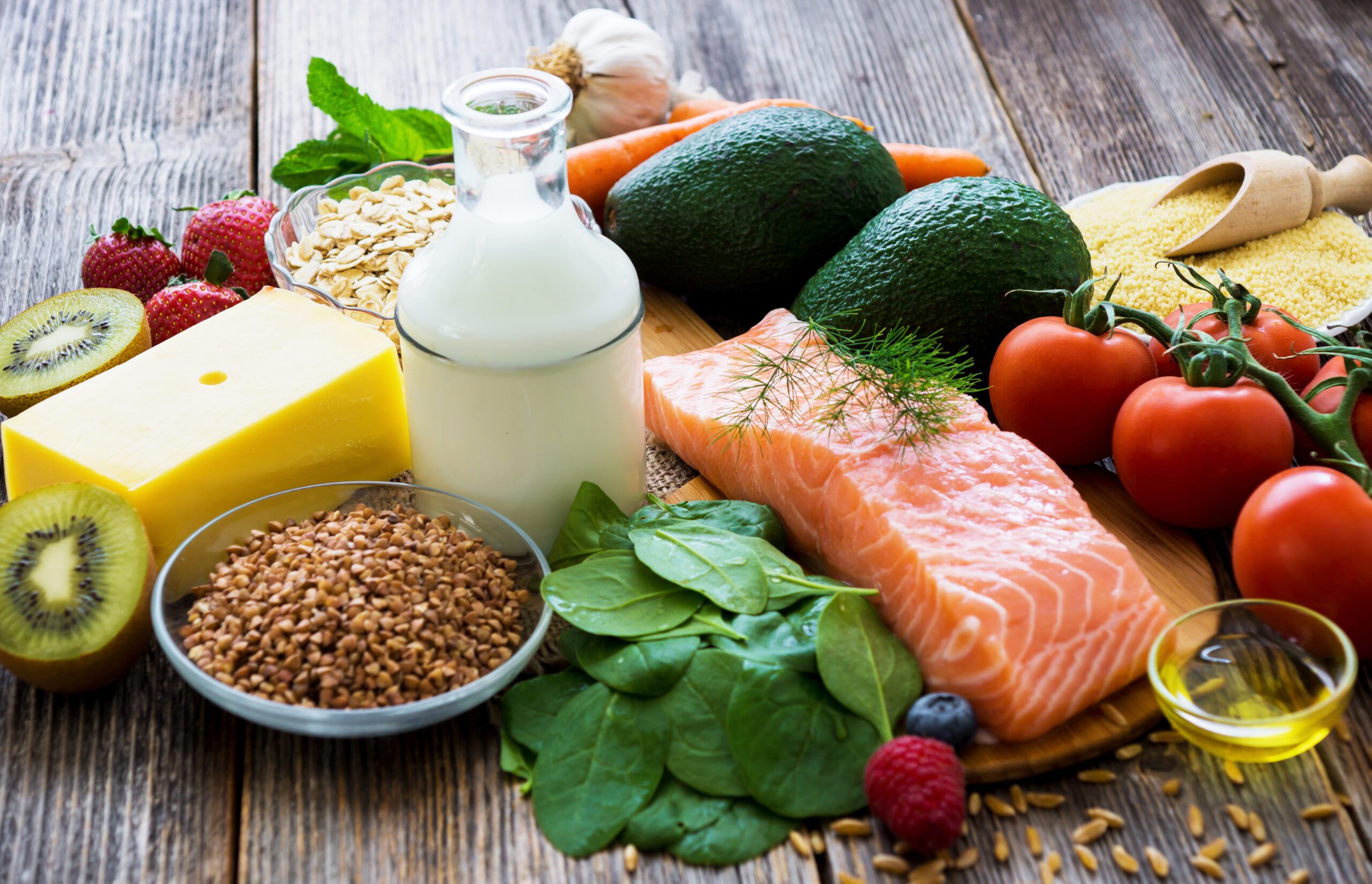Estrogen + Microbiome = Estrobolome
Jaclyn Smeaton, ND
Estrogen + Microbiome = Estrobolome
by Jaclyn Smeaton, ND
*This blog was originally published on d r k ara f it zgerald.com in September 2022.
The function of the digestive tract is essential for proper function of almost every biological system in the body. Hormone metabolism and endocrinology is no exception to this rule. In fact, the connection is so strong with estrogen, that there is a term to describe it in the literature – the estrobolome .

The Estrobolome and Estrogen Metabolism
The insights leading to today’s understanding of the estrobolome date back to as early as 1985, when it was found that specific bacterial strains (in rats) could produce an enzyme called beta-glucuronidase , which would de-conjugate estrogens, making them available to be reabsorbed in the gut and back into circulation.
As a reminder, estrogens undergo several steps in order to be metabolized and excreted by the body. First, primary estrogens (estrone, estradiol and estriol) are hydroxylated by CYP 450 in the liver into the metabolites 2-OH, 4-OH, and 16-OH (and others). These metabolites undergo further metabolism with the actions of methylation, glucuronidation, and sulfonation into their conjugated form. At this point, the conjugated estrogens are “packaged up” and can then travel via the bile into the intestines for excretion.
This observation leads to the question of what happens to the remaining estrogens, and why? The answer lies in the estrobolome, the collection of microbes in the gut that are capable of metabolizing and modulating the amount of circulating estrogen in the body. One way that this occurs is through the production of beta-glucuronidase by microbes in the gut.
Beta-glucuronidase
Beta-glucuronidase plays an important role in metabolism. In addition to estrogen, the substrate of note in this blog, beta-glucuronidase also hydrolyzes amino acid residues from other compounds, including medications like heparan sulfate and even the body’s own bilirubin, allowing it to be reabsorbed.
More than 60 genera of intestinal microbes have been observed to produce beta-glucuronidase , including key genera such as Lactobacillus , Bifidobacterium , Enterococcus , and others. It is also likely that the gut microbiome-hormonal connection goes beyond beta-glucuronidase, with evidence to show that intestinal flora can influence estrogen balance through other enzyme pathways. In the human GI tract, the most important genes that encode beta-glucuronidase are called the GUS genes. About 112 GUS genes have been identified and tend to be expressed in four main bacterial phyla including Clinically appropriate levels of beta-glucuronidase have not yet been established.
The Estrobolome and Disease Risk
Through the estrobolome, the intestinal microbiome can directly impact a woman’s lifetime burden of estrogen and may also influence disease risk directly. Researchers have been evaluating the role of the estrobolome in several conditions with known estrogen influence, including estrogen-responsive cancers and endometriosis.
/pmc/articles/PMC5017946/pdf/djw029.pdf
The estrobolome (along with the genitourinary microbiome) is an area of interest in endometriosis as well. In women with pathologically confirmed endometriosis, there is a strong correlation between GI and urogenital bacterial species and concentrations of urinary estrogen and urinary estrogen metabolites, indicating a connection between microbial dysbiosis and endometriosis disease progression.

Improving the Estrobolome
Urinary indican, a new organic acid included on some DUTCH panels, has been shown to be a reliable marker for intestinal dysbiosis . Data from DUTCH Test samples in postmenopausal women and in men have shown a small, but statistically significant association between elevated urinary indican levels (suggesting dysbiosis) and estradiol levels, reinforcing the assertion that GI dysbiosis is an important factor in circulating estrogen levels.
The DUTCH Test provides a uniquely useful insight into the estrobolome in this way. DUTCH Test panels show urinary indican to suggest whether dysbiosis is part of the patient picture in addition to total estrogen levels and estrogen metabolites, so practitioners can observe whether relative estrogen excess may be resulting from a sub-optimal gastrointestinal environment.
To address the estrobolome’s impact on hormone levels, it is imperative to address the root cause – the gut microbiome. Prebiotics, probiotics, and symbiotics have all been shown to balance beta-glucuronidase activity , along with a high fiber diet rich in diverse phytonutrients and fermented foods. There may also be a place for additional gut-supportive nutrients, though data showing direct correlation is lacking. Calcium-d-glucarate may also help to block beta-glucuronidase, reducing deconjugation of estrogens and supporting proper excretion of estrogen metabolites, and is a reasonable dietary supplement approach. Dosing typically ranges from 500 to 1000 mg daily.
The evidence clearly demonstrates a significant impact of the gut microbiome on a woman’s estrogen levels. It is critical to keep this in mind when working on a woman’s hormonal balance. While improving estrogen metabolism with lifestyle and supplementation, be sure to consider the potential impact of the estrobolome on recirculation. Only when the entire estrogen metabolism and excretion pathways are addressed can you restore optimal estrogen balance and function.
References
- Gadelle D, Raibaud P, Sacquet E. beta-Glucuronidase activities of intestinal bacteria determined both in vitro and in vivo in gnotobiotic rats. Appl Environ Microbiol. 1985 Mar;49(3):682-5. doi: 10.1128/aem.49.3.682-685.1985. PMID: 3994372; PMCID: PMC373571.
- Kwa M, Plottel CS, Blaser MJ, Adams S. The Intestinal Microbiome and Estrogen Receptor-Positive Female Breast Cancer. J Natl Cancer Inst. 2016 Apr 22;108(8):djw029. doi: 10.1093/jnci/djw029. PMID: 27107051; PMCID: PMC5017946.
- Markowitz VM, Chen IM, Palaniappan K, Chu K, Szeto E, Grechkin Y, Ratner A, Jacob B, Huang J, Williams P, Huntemann M, Anderson I, Mavromatis K, Ivanova NN, Kyrpides NC. IMG: the Integrated Microbial Genomes database and comparative analysis system. Nucleic Acids Res. 2012 Jan;40(Database issue):D115-22. doi: 10.1093/nar/gkr1044. PMID: 22194640; PMCID: PMC3245086.
- Peters BA, Lin J, Qi Q, Usyk M, Isasi CR, Mossavar-Rahmani Y, Derby CA, Santoro N, Perreira KM, Daviglus ML, Kominiarek MA, Cai J, Knight R, Burk RD, Kaplan RC. Menopause Is Associated with an Altered Gut Microbiome and Estrobolome, with Implications for Adverse Cardiometabolic Risk in the Hispanic Community Health Study/Study of Latinos. mSystems. 2022 Jun 28;7(3):e0027322. doi: 10.1128/msystems.00273-22. Epub 2022 Apr 13. PMID: 35675542; PMCID: PMC9239235.
- Le N, Cregger M, Brown V, Loret de Mola J, Bremer P, Nguyen L, Groesch K, Wilson T, Diaz-Sylvester P, Braundmeier-Fleming A. Association of microbial dynamics with urinary estrogens and estrogen metabolites in patients with endometriosis. PLoS One. 2021 Dec 16;16(12):e0261362. doi: 10.1371/journal.pone.0261362. PMID: 34914785; PMCID: PMC8675749.
- Fuhrman BJ, Feigelson HS, Flores R, Gail MH, Xu X, Ravel J, Goedert JJ. Associations of the fecal microbiome with urinary estrogens and estrogen metabolites in postmenopausal women. J Clin Endocrinol Metab. 2014 Dec;99(12):4632-40. doi: 10.1210/jc.2014-2222. PMID: 25211668; PMCID: PMC4255131.
- Flores R, Shi J, Fuhrman B, Xu X, Veenstra TD, Gail MH, Gajer P, Ravel J, Goedert JJ. Fecal microbial determinants of fecal and systemic estrogens and estrogen metabolites: a cross-sectional study. J Transl Med. 2012 Dec 21;10:253. doi: 10.1186/1479-5876-10-253. PMID: 23259758; PMCID: PMC3552825.
- Lord RS, Bralley JA. Clinical applications of urinary organic acids. Part 2. Dysbiosis markers. Altern Med Rev. 2008 Dec;13(4):292-306. PMID: 19152477.
- Tomasello G, Mazzola M, Leone A, Sinagra E, Zummo G, Farina F, Damiani P, Cappello F, Gerges Geagea A, Jurjus A, Bou Assi T, Messina M, Carini F. Nutrition, oxidative stress and intestinal dysbiosis: Influence of diet on gut microbiota in inflammatory bowel diseases. Biomed Pap Med Fac Univ Palacky Olomouc Czech Repub. 2016 Dec;160(4):461-466. doi: 10.5507/bp.2016.052. Epub 2016 Oct 26. PMID: 27812084.
- Singh V, Park YJ, Lee G, Unno T, Shin JH. Dietary regulations for microbiota dysbiosis among post-menopausal women with type 2 diabetes. Crit Rev Food Sci Nutr. 2022 May 30:1-16. doi: 10.1080/10408398.2022.2076651. Epub ahead of print. PMID: 35635755.
- Dwivedi C, Heck WJ, Downie AA, Larroya S, Webb TE. Effect of calcium glucarate on beta-glucuronidase activity and glucarate content of certain vegetables and fruits. Biochem Med Metab Biol. 1990 Apr;43(2):83-92. doi: 10.1016/0885-4505(90)90012-p. PMID: 2346674.
TAGS
Women's Health
Premenopausal Women
Microbiome
Estrogen and Progesterone
Estrogen Detoxification
Inflammation